According to the CBSE Syllabus 2023-24, this chapter has been renumbered as Chapter 10.
Sound plays an important role in our life. It is through sound we know that a period in school is over or if someone is approaching you by just listening to the footsteps. Vibrating objects produce sound. Vibration is the to-and-fro or back-and-forth movement of an object. Sound needs a medium to travel. Hence, it cannot travel in a vacuum.
For more information on Sound, watch the below video

Introduction to Sound
Introduction to waves
- The sound is produced by vibrating objects.
- They travel from one place to another in the form of waves. Hence, the name sound waves.
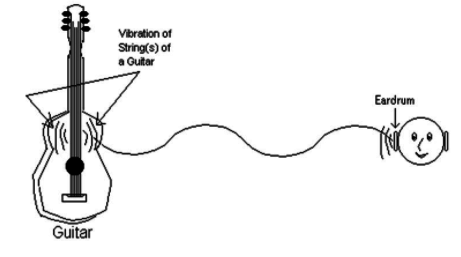
Wave and particle motion of waves
- Mechanical waves are waves that travel through a material medium.
- It is of two types: depending on the direction of motion of the particle of the medium and the wave propagation:
*transverse
*longitudinal
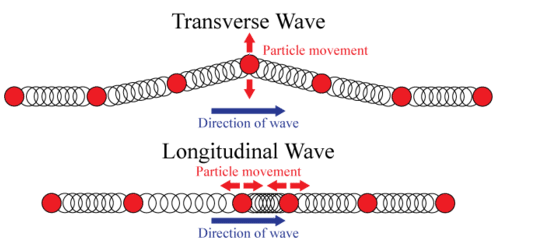
Transverse waves
- Particle motion is to perpendicular the direction of wave motion.
- This type of wave is a mechanical wave called a transverse wave. For example, light or even Mexican wave in a stadium.
Longitudinal waves
- When the particles of the medium travel parallel to the direction of the wave motion by means of successive compression or rarefaction.
- It is also a mechanical wave.
- Example: a slinky
To know more about Sound Waves, visit here.
Sound Properties
Introduction to sound waves
– Sound needs a medium to propagate. The matter or material through which sounds propagates is called a medium.
– Sound cannot travel in a vacuum. The moon does not have an atmosphere. Hence, you can hear on the moon.
For more information on Properties of Sound, watch the below video

Sounds by Humans
How do humans produce sound?
- The sound produced in the voice box is called the larynx, located at the upper end of the windpipe.
- 2 vocal cords get stretched across in the voice box. Has a slit through which air is forced out by the lungs.
- Muscles attached to vocal cords make them tight or loose.
Hearing
Human ear
- Outer ear = pinna: collects sound from the surroundings.
- Sound passes through a tube called an auditory canal.
- Eardrum (tympanic membrane) → vibrates when the sound incident.
- Vibrations are sent to the inner ear, and from there, it goes to the brain as signals via the auditory nerve.
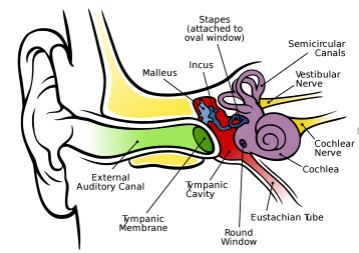
To know more about Human Ear, visit here.
Amplitude, Time Period and Frequency
Amplitude, frequency and time period of vibrations
- The magnitude of disturbance in the medium on either side of the mean value is called as Amplitude(A). Larger the amplitude, the louder the sound.
- The number of oscillations per second is called frequency. Expressed in Hertz (Hz).
- Time taken for one complete oscillation to travel across a point. T = 1/f. (Seconds)
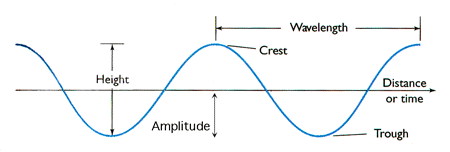
For more information on Characteristics of Sound Waves, watch the below videos
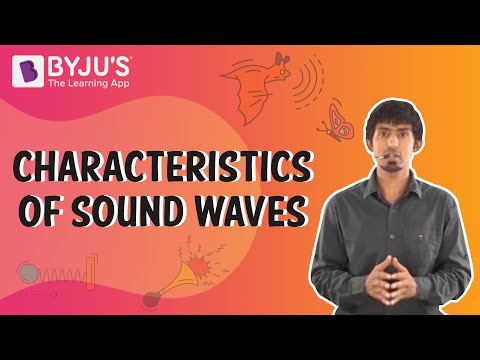

Loudness and Pitch
- Volume or loudness of a sound depends on the amplitude. The force with which an object is made to vibrate gives the loudness.
- The number of oscillations per unit time. Directly proportional to frequency.
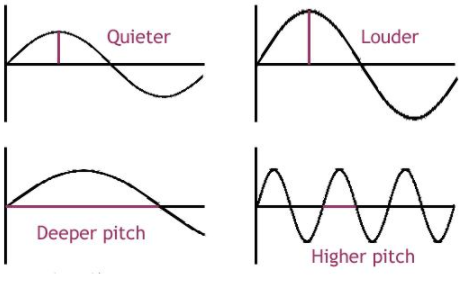
Audible and inaudible sounds
- Audible range = 20Hz to 20kHz known as the Sonic range.
- Below 20 Hz (inaudible) → infrasonic range
- Above 20 kHz (inaudible) → Ultrasonic range
To know more about “Characteristics of Sound Waves”, visit here.
Noise Pollution
Noise and music
– Sounds with the same pitch and loudness can be distinguished based on the quality. Music is pleasant to the ears, while noise is not.
– Unpleasant sounds are called noise.

Noise pollution and measures to control it
– Presence of excessive unwanted noise in our surroundings is called noise pollution.
– Can cause hearing impairment, sleeplessness and also hypertension.
– Must be minimised by reducing noisy operations and honking in residential areas. Planting trees along roads also cuts down the noise.
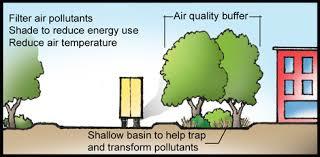
To know more about Noise Pollution, visit here.
| Also Access |
| NCERT Solutions for Class 8 Science Chapter 13 |
| NCERT Exemplar for Class 8 Science Chapter 13 |
Learn more about sound and its properties and other related topics, including CBSE class 8 Science notes, at BYJU’S.
Also, Read
| Properties of Sound | Sound Waves |
Frequently Asked Questions on CBSE Class 8 Science Notes Chapter 13 Sound
What are Transverse waves?
Transverse wave is where the motion in all points on a wave oscillates along paths at right angles to the direction of the wave’s advance.
What is the definition of Amplitude?
The definition of amplitude refers to the length and width of waves, such as sound waves, as they move or vibrate.
What are some ways to control Noise pollution?
1. Turn off unnecessary appliances 2. Use earplugs 3. Follow limits of noise level
Comments